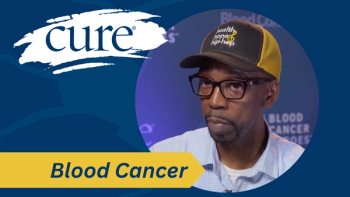
Treatment With Novel Drug Induces Promising Response Rates in Ovarian Cancer Subgroup
“These results position mirvetuximab soravtansine to become a practice-changing, biomarker-driven, standard-of-care treatment option for patients with (high folate receptor-alpha)-positive, platinum-resistant ovarian cancer,” noted one of the study authors.
Patients with platinum-resistant ovarian cancer and high folate receptor-alpha expression achieved meaningful responses after receiving treatment with mirvetuximab soravtansine, according to data from a phase 3 trial.
The results, which were presented during the 2022 Society of Gynecologic Oncology Annual Meeting on Women’s Cancer, also showed that the novel drug had a similar safety profile to what has been reported in previous studies.
“These results position mirvetuximab soravtansine to become a practice-changing, biomarker-driven, standard-of-care treatment option for patients with (high folate receptor-alpha)-positive, platinum-resistant ovarian cancer,” lead study author Dr. Ursula A. Matulonis, chief of the Division of Gynecologic Oncology at Dana-Farber Cancer Institute in Boston, said during a presentation of the findings.
Treatment options for patients with platinum-resistant ovarian cancer are limited. Single-agent chemotherapy is often used, but efficacy is limited, and toxicities can be substantial.
Of note, results from a prior analysis of several studies showed that the antibody-drug conjugate mirvetuximab soravtansine conferred an objective response rate (the percentage of patients whose disease partially or completely responds to the treatment) of 31.4%. Moreover, those findings showed that treatment with mirvetuximab soravtansine led to a median duration of response of 7.8 months and a median progression-free survival (the length a patient lives after treatment without their disease getting worse) of 4.4 months among 70 patients who had received one to three prior treatments.
Patients with platinum-resistant ovarian cancer who were treated with one to three prior regimens and experienced recurrence within six months after the last platinum chemotherapy dose they had received were enrolled onto the international phase 3 SORAYA trial.
Once every three weeks, the study participants were administered mirvetuximab soravtansine through an IV.
The main goal of the trial was to determine the objective response rate among patients. The study authors also wanted to identify the duration of response to the trial drug. Eighty percent of the patient population had an initial diagnosis of epithelial ovarian cancer, 11% had primary peritoneal cancer and 8% had fallopian tube cancer. More than half (59%) of the patients were diagnosed with stage 3 disease. Two percent of the population were diagnosed with stage 1 or stage 2 disease, and the rest had stage 4 ovarian cancer.
Moreover, 51% of patients received three prior systemic therapies, 39% received two prior treatments and 9% previously received one therapeutic.
All patients received prior Avastin (bevacizumab), and 48% of patients previously received a PARP inhibitor.
Among the group of patients who previously received one to two lines of treatment (51 patients), mirvetuximab soravtansine induced an objective response rate of 35.3% and a median duration of response of 5.9 months in 18 evaluable patients. In those who received three prior lines of treatment (53 patients), treatment with the study drug elicited an objective response rate of 30.2% with a median duration of response of seven months in 16 evaluable patients.
The findings also showed that among the 50 patients to have previously received a PARP inhibitor, the use of study drug induced an objective response rate of 38% and a median duration of response of 5.7 months among 19 evaluable patients.
As of
The median investigator-assessed duration of response was 6.9 months with the agent. Moreover, the median progression-free survival with mirvetuximab soravtansine was 4.3 months.
Regarding safety, all-severity side effects were experienced by 86% of patients. Most of the side effects were mild in severity, reversible ocular and gastrointestinal events. Serious treatment-related side effects were experienced by 8% of patients.
Specifically, the most common serious side effects experienced by those who received mirvetuximab soravtansine included a damaged cornea (8%), blurred vision (6%), dry eye (2%), diarrhea (2%), fatigue (1%), abnormal fatigue (1%), decreased appetite (1%), and neutropenia (1%). One patient experienced severe damaged cornea.
Side effects resulting in treatment delays occurred in 32% of patients, and 19% experienced a dose reduction because of side effects.
One patient death occurred on the trial and was determined to potentially be associated with the study treatment; this patient experienced respiratory failure, and an autopsy did not reveal any evidence of drug reaction. Lung metastases were observed.
“The safety and tolerability profile of mirvetuximab soravtansine in SORAYA is consistent with what observed in previous studies,” Matulonis concluded.
For more news on cancer updates, research and education, don’t forget to, subscribe to




